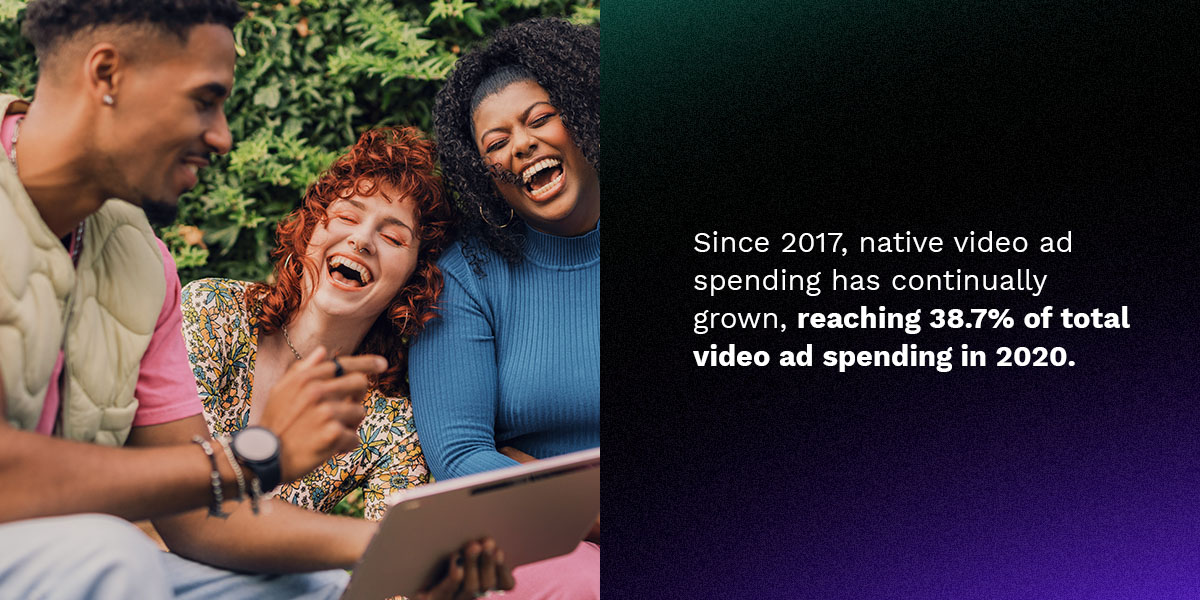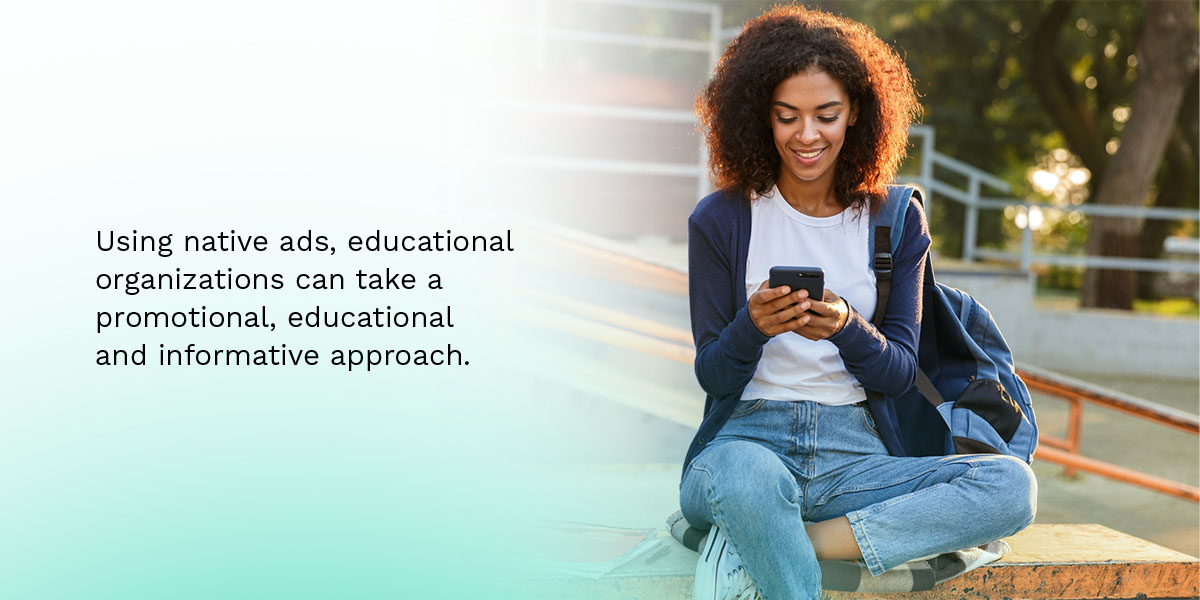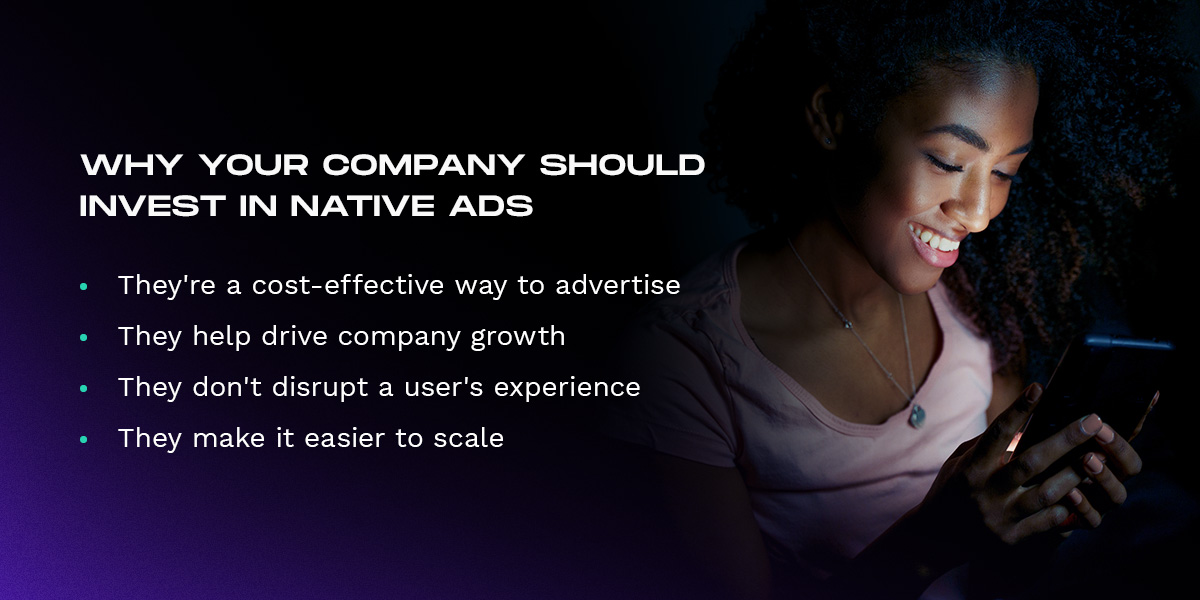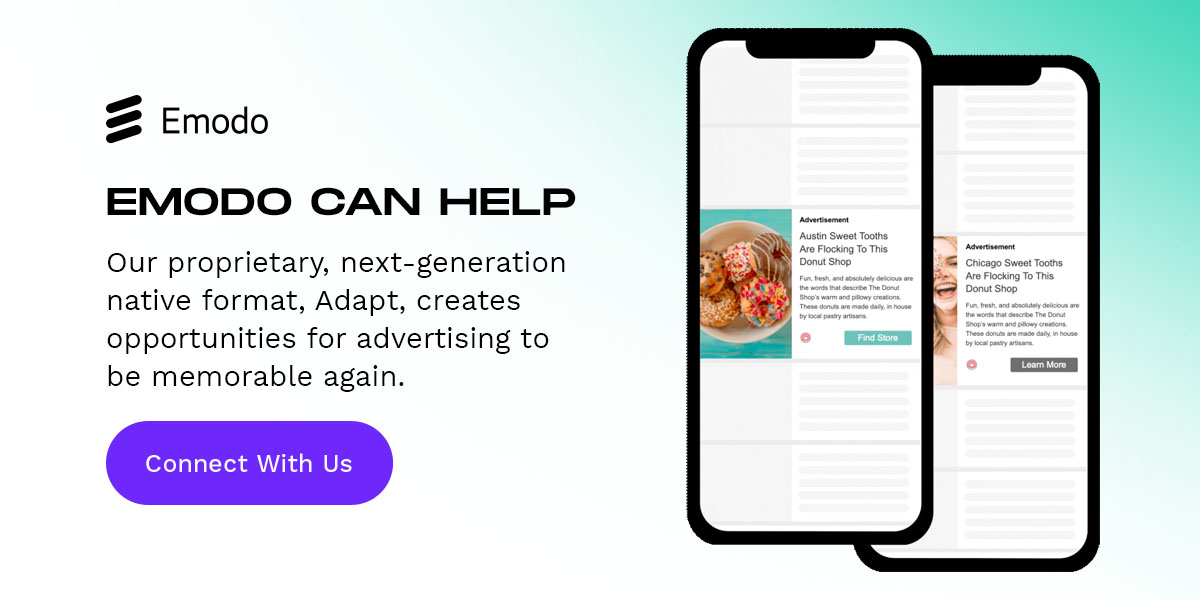Native advertising is not necessarily a new tactic, but you may not have much experience with it. This form of advertising focuses on placing ads that match the look, feel and design of the content on the platform where they appear. The goal of native advertising is to combat “banner blindness” or ignoring content that appears to be an ad.
Native advertising campaigns match the look and feel of the content already on the page, so they appear more natural and boost engagement and conversion with users. Today, more and more companies are implementing this strategy and taking advantage of native advertising benefits. We’ll discuss the industries that are well suited for native advertising, as well as some trends to keep an eye out for.
Native ad spending forecast
If you’re still skeptical about the effectiveness of native ads, it might calm your doubts to know that spending in this category has been trending up in the past few years. And projections estimate it will only get higher. In 2018, native ad spending hit $35 billion in the U.S. This number was expected to surpass $52 billion by the end of 2020.
In 2021, advertisers spent nearly $120 billion on native display advertising. This was a massive increase compared to 2020, which shows just how promising this avenue was becoming for advertisers and publishers. As of 2022, native display ad spending is forecasted to increase by almost 15% compared to spending in 2021.
Of course, there are many different types of native advertising to consider in these numbers, and some perform better than others. For instance, native ad spending on social media platforms and mobile devices has increased due to the growing usage of these channels.
If you’re trying to target a specific consumer, most likely, they will either engage with your ad through their smartphone or on a social network. Native social display advertising is expected to grow by over 17% by the end of 2022 and almost 14% by the end of 2023.
Native trends to watch
Here are the following trends in native advertising that your company should watch for.
Mobile outreach
In 2021, there were over 7 billion mobile users. As the time users spend on mobile devices increases, so will ad spending on this advertising channel. Native advertising is designed to enhance the mobile browsing experience and avoid disrupting consumers’ visits to certain pages or platforms. One report found that almost 90% of all native ads in the U.S. were delivered on mobile devices in 2020 compared to about 85% in 2018.
As mobile users generally rely on apps for social media networks and web browsing, spending in this category has also seen record growth, with over $40 billion spent in the App Store in 2021 compared to $34 billion in 2020. Native advertising on mobile devices is a popular trend to target consumers who are already looking to spend money.
Video distribution

Video is another popular trend in the digital marketing industry. With the rise of social media, video as an advertising format is growing every year. In fact, since 2017, native video ad spending has continually grown, reaching 38.7% of total video ad spending in 2020.
With Instagram reels and TikTok videos gaining quick traction and success for businesses, this avenue may be ideal for some publishers. Videos shown through in-feed native ads are often quicker, easier to digest and more interactive, which are all beneficial elements for companies attempting to increase sales.
Programmatic automation
Programmatic advertising utilizes AI technology to automate the ad-buying process so publishers can continue to target specific audiences. Without this solution, publishers in programmatic buying may have difficulties finding common ground for the design, look and feel of native ads with advertisers.
It’s common for native ads to be purchased programmatically, and this occurrence will continue to grow. The number of programmatic native advertisers grew from 926 to 1,900 between 2020 to 2021. The total spend in native programmatic ads grew from around $62 billion in 2019 and is expected to surpass $140 billion by 2023.
First-party data strategies
First-party data is another trend to watch out for in the native advertising world. This data, unlike third-party data, is unique to every company. First-party data is information that businesses collect — with consumer consent — through various interactions on websites, apps and emails. This helps advertisers and publishers to create more personalized ads and promote relevant content. The end goal is to convey the right message to your target audience!
Industries that are a great fit for native advertising
There are endless ways to advertise in every industry, but native ads require much more consideration and careful planning. Here are some of the top industries that are a strong fit for using native advertising as part of their marketing strategy.
B2C
The business-to-consumer (B2C) space has plenty of native advertising opportunities. As more and more companies compete for consumer dollars, native advertising can be the solution many businesses need to increase sales and stand out among the rest.
As more users become immune to traditional marketing methods — including blatant ads — and actively ignore irrelevant or disruptive ads, B2C industries can take advantage of the natural aesthetic of native ads to boost engagement. Native ads will also help promote trust and loyalty with customers.
Food and beverage
Native ads give brands more visibility, creativity and visual options. When it comes to the food and beverage industry, images can make or break an ad. After all, restaurants, caterers, wine-making companies and other businesses will want to ensure their ads craft the most appealing, appetizing images of their food or beverages to attract customers.
Native ads value relevancy and genuine photos, so consumers who are already surfing online for a recipe or searching for a new restaurant to visit will likely engage more with food-related ads that appeal to their tastes — literally. Food and beverage businesses can boost engagement with customers and maintain trust by complementing the content their readers are already looking at.
Education

Higher education organizations can benefit from using native ads to appeal to different types of students. Some institutions are facing a growing issue of declines in enrollment. And a large portion of this industry’s audience, including Gen Z and millennials, are the most likely to avoid ads altogether.
This means universities and colleges need to be extra innovative to attract students outside of those who are graduating from high school. Using native ads, educational organizations can take a promotional, educational and informative approach, such as why students should choose a certain school. These immersive experiences can be more engaging to potential students because they won’t “look” like other ads, such as pop-ups.
Finance
As with any company, financial institutions won’t make it far if potential customers don’t find them credible or trustworthy. With native advertising, financial companies can create useful content that highlights their brand’s knowledge, professionalism and expertise.
Native ads can help financial businesses eliminate disruptive ads and produce content that provides value and builds rapport with readers. These ads help attract business, improve sales and boost a brand’s reputation — all without feeling like an ad to users.
Health care
Health care is a rapidly changing and innovative industry. Many health care organizations and brands are often looking for new ways to reach out to customers, patients and potential partners about policies that impact them or options that may suit them and their health needs. In this case, B2B and B2C native ads come into play.
Brands can create native ads that educate readers on budgeting for health plans, specific health questions or how to treat certain conditions at home. Native advertising has exploded across health care industries, including pharmacies, payers, health systems, devices and retailers. Native ads in health care tend to receive highly engaged audiences, with at least 20 times more engagement than traditional branded ads.
Technology
Content marketing in the technology industry requires building trust with an audience until they’re willing to invest in products and remain a loyal customer. The tech industry, including software companies, can leverage internal data to learn about their consumer’s interaction behaviors and adjust native ads to meet their needs and preferences.
Instead of annoying pop-ups or click-through ads, tech companies can provide new insights to businesses and present new products to customers with credibility from native ads.
Retail
Online shopping has been growing steadily for almost the last decade. By 2026, e-commerce is expected to reach approximately a quarter of all global retail sales. This is fantastic news for the retail and e-commerce industries and shows just how many customers are transitioning to buying more goods online. Retailers can use native ads to reach out to potential customers who are shopping for similar or related products.
For example, a makeup retailer can place a native ad on a beauty and lifestyle news site to target customers who are already consuming articles and content related to the makeup category. An athletic fashion brand looking to target a specific demographic can distribute native ads on a sports publisher’s website to reach those who are interested in learning about fitness products. Native ads are an effective way to get online shoppers to click directly on a retailer’s website for a convenient and seamless shopping experience.
B2B
Similar to B2C industries, business-to-business (B2B) spaces can use native ads to attract more business and reach out to other companies who need their services. At least 84% of B2B buyers, including CEOs and VPs, use social media to make purchasing decisions.
Since native ads thrive on social media platforms, this is an ideal match for many businesses. B2B native ads can help build credibility and trust for brands because they’re promoting content that other businesses actually want to see. At the same time, these businesses will appreciate seeing targeted content that actually understands their needs.
Why your company should invest in native ads

Before you launch your next campaign, it’s essential to know how your company can make the most of your advertising investment with native ads. Here are the top reasons your company or brands should go the native ad route:
- They’re a cost-effective way to advertise: With native advertising, inventory tends to be sold based on a cost-per-click (CPC) basis. This means your brand only pays when a consumer shows interest in your ads.
- They help drive company growth: When users click through sponsored content, they’re often directed to the brand’s website, which is a perfect opportunity to capture valuable information, engage with your audience and drive sales.
- They don’t disrupt a user’s experience: Perhaps the most distinctive feature of native ads is they don’t interrupt the user with pop-ups as they’re scrolling online. Native ads don’t force consumers to watch videos or tap through a bunch of survey questions, making their experience with your brand more positive.
- They make it easier to scale: Native ads help deliver fantastic results across various platforms, so your business can adjust to any demand. If your brand’s current offerings have an added value, in-feed native advertising can help make an uninterested consumer into a buyer. This is an especially scalable option via programmatic channels.
Emodo can help
Native advertising is a cost-effective way to target your audience without disrupting their experience. These ad units integrate smoothly with content and help your brand stand out among the noise. If you’re ready to go native, consider Emodo Adapt.
Our proprietary, next-generation native format, Adapt, creates opportunities for advertising to be memorable again. This first-of-its-kind advanced native offering presents a richer and smarter approach to advertising through eye-catching animations, effects and templates, dynamically optimized for success on the brands’ KPI to increase the ROI of your programmatic investments.
Connect with us to drive greater impact through real-time decisioning with Emodo.
MORE LIKE THIS



